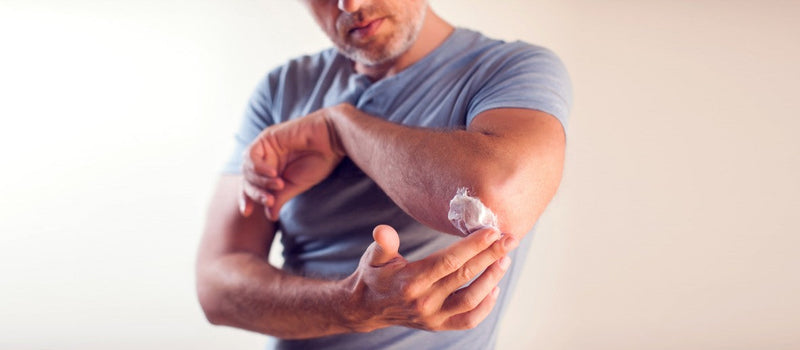

Insulin is a hormone produced by your pancreas that moves glucose from your blood into your cells to provide them with energy. Insulin moves glucose by enabling the activity of a special glucose transporter throughout the body called GLUT4. If there is no insulin, GLUT4 is not activated, and it is very difficult for most of the sugar to get out of the blood and into the cells. This causes the sugar level in the blood to rise to dangerously high levels, which is called hyperglycemia. [1]
Depending on whether you have Type 1 or Type 2 diabetes, the requirement for insulin will be different. Type 1 is considered an autoimmune disease. The immune system mistakes the body’s own healthy cells as foreign invaders. In response, the immune system attacks and destroys the insulin-producing beta cells in the pancreas. Once these cells are destroyed, the body is unable to produce insulin, and you need insulin shots to use glucose from meals.
With Type 2 diabetes, the pancreas does not produce enough insulin. Furthermore, cells do not respond well to insulin and as a result take in less sugar. There are medications to make the body more sensitive to insulin or to force more insulin to be secreted from the pancreas. Such medications typically are typically tried first in Type 2 diabetes. However, over time, if damage from diabetes continues, some people with Type 2 diabetes become so resistant that they need extra insulin on top of what they normally make.[2]
How to determine insulin dosages
Insulin can be a lifesaver for if you have diabetes, as long you take it correctly. However, an insulin overdose can be life threatening.
The amount of insulin a person needs varies between individuals, from meal to meal and from day to day. Insulin drug types as listed by CDC include:[3]
Rapid-acting insulin: Onset (how quickly insulin lowers your blood sugar) occurs within 15 minutes and its peak time (when it is at its highest strength) is 1 hour. Its duration (how long insulin works to lower your blood sugar) is 2 to 4 hours. Rapid-acting insulin usually is taken before meals. Often used with longer-acting insulin
Rapid-acting inhaled: The onset is 10 to 15 minutes and peak time 30 minutes. It lasts for 3 hours and usually is taken right before a meal. Often used with injectable long-acting insulin.
Regular insulin/short-acting insulin: The onset is about 30 minutes after you take it, with its peak time at 2 to 3 hours. It lasts 3 to 6 hours. You usually take it 30 to 60 minutes before a meal.
Intermediate acting insulin: Its onset is 2 to 4 hours and its peak time 4 to 12 hours. It lasts 12 to 18 hours. This type of insulin drug covers insulin needs for half a day or overnight. Often used with rapid- or short-acting insulin.
Long-lasting insulin: Onset is 2 hours. Does not peak and lasts up to 24 hours. Covers insulin needs for about a full day. Often used, when needed, with rapid- or short-acting insulin.
Ultra-long lasting: Onset is 6 hours. It does not peak and lasts 36 hours or longer. Provides steady insulin for long periods.
Premixed: There also is premixed insulin, with an onset of 5 to 60 minutes. Peaks vary. It lasts 10 to 16 hours. Combines intermediate- and short-acting insulin. You usually take premixed insulin 10 to 30 minutes before breakfast and dinner.
The CDC notes that your doctor will determine the right insulin for you based on
· How active you are (exercise improves insulin sensitivity and may lower how much insulin you need).
· The food you eat (high carbohydrate foods need more insulin/low carbohydrate foods may need less).
· How well can you manage your blood sugar levels.
· Your age.
· How long it takes your body to absorb insulin and how long it stays active.
Recognize insulin overdose symptoms
Mild insulin overdose symptoms
Since insulin helps the body move glucose into the cells when there is too much insulin, hypoglycemia or low blood sugar occurs.
Mild symptoms of an insulin overdose include:
- confusion or feeling as though you have “brain fog”
- irritability
- anxiety
- depression
- shakiness, weakness, or a “jittery” feeling
- dizziness
- rapid heartbeat
- sweating, cold sweats, and chills
- blurred vision or double vision
To rapidly raise blood sugar, take a glucose tablet or eat or drink a fast-acting source of glucose, such as a piece of candy, a tablespoon of honey, or a sweet fruit juice for an insulin overdose treatment. The goal is to raise your blood sugar level above 70 mg/dl. If symptoms persist and your blood glucose reading shows that the levels have not returned to normal, you should seek medical attention.
Severe insulin overdose symptoms
If blood sugar levels drop too low, you can experience severe hypoglycemia symptoms or insulin or diabetic shock, which can be life-threatening. You may experience seizures, loss of consciousness. In very severe cases, severe hypoglycemia can lead to coma and death.
A severe insulin overdose requires immediate attention. If you cannot take care of yourself someone with you should put some honey or glucose gel inside your cheek.
For precautions if you take insulin always carry: [4]
· A glucagon kit, which includes glucagon, sterile water, and a syringe for preparing and delivering an injection to counter the effects of insulin in an emergency.
· Medical ID, which can alert a bystander to the fact that diabetes the cause of the symptoms, allowing them to inform any emergency healthcare providers about your needs.
Avoid an insulin overdose
It is not rare to overdose on insulin. For example, you can accidentally inject too much because you are distracted or forget when you took your previous injection and take another injection before it is necessary. You may forget to eat or have a mealtime delay.
The best way to avoid an insulin overdose [5]
· Use the right type of insulin and the correct amount. An insulin overdose can sometime occur due to a calculation error.
· Read all packaging carefully. Ask your doctor if anything is unclear.
· Eat regularly.
Insulin overdoes can be serious, even life threatening. Administer glucagon or take a fast-acting source of glucose if available. Seek emergency care if symptoms do not respond to insulin overdose treatment.
[1] Taxin, Zachary, M.D., “What Is an Insulin Overdose,” HealthCentral, January 18, 2023. https://www.healthcentral.com/condition/type-1-diabetes/insulin-overdose
[2] Ibid
[3] “Types of Insulin,” CDC, Accessed June 6, 2025. https://www.cdc.gov/diabetes/about/how-to-use-insulin.html
[4] Morales-Brown, Peter, “What’s to know about an insulin overdose,” Medical New Today, August 2, 2023. https://www.medicalnewstoday.com/articles/317300
[5] Morales-Brown, Peter, “What’s to know about an insulin overdose”







